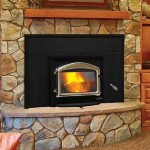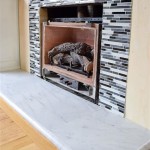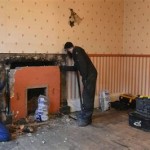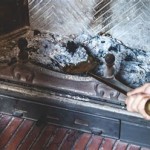Local Gas Fireplace Installers: A Comprehensive Guide
The installation of a gas fireplace represents a significant home improvement project, offering both aesthetic appeal and functional heating capabilities. Selecting qualified and experienced local gas fireplace installers is paramount to ensuring a safe, efficient, and compliant installation. This article provides a comprehensive overview of the considerations involved in choosing the right installer, the installation process itself, and the ongoing maintenance required to keep a gas fireplace operating effectively.
Gas fireplaces offer several advantages over traditional wood-burning fireplaces. They provide consistent and readily available heat, eliminating the need to chop and store firewood. Gas fireplaces are also generally more energy efficient, reducing heating costs. Furthermore, they contribute to cleaner air quality because they produce fewer emissions than wood-burning fireplaces. However, the complexity of gas line connections and venting systems necessitates professional installation to prevent gas leaks and carbon monoxide poisoning.
Local gas fireplace installers often possess a detailed understanding of local building codes and permit requirements. They are familiar with the specific challenges and regulations associated with installations in the area. This localized expertise is crucial for ensuring that the installation meets all necessary safety standards and avoids potential legal complications.
When selecting a gas fireplace installer, several factors should be carefully evaluated. These include licensing, insurance, experience, reputation, and the scope of services offered. A thorough vetting process can help homeowners make an informed decision and avoid potential pitfalls.
Licensing and Certification
A valid license is a fundamental requirement for any gas fireplace installer. Licensing ensures that the installer has met the minimum competency standards established by the relevant governing body. The licensing requirements may vary depending on the specific jurisdiction. In many areas, installers are required to hold a specific gas fitter license, which demonstrates their knowledge of gas line installation, venting systems, and safety regulations.
Checking the licensing status of a potential installer is a straightforward process. Most jurisdictions have online databases where licenses can be verified. This verification process can confirm that the license is current and that the installer is authorized to perform gas fireplace installations in the area. Additionally, it can reveal any disciplinary actions or complaints filed against the installer.
Beyond basic licensing, certifications from recognized industry organizations can further demonstrate an installer's expertise. Organizations like the National Fireplace Institute (NFI) offer certifications for gas fireplace installers. These certifications involve rigorous testing and continuing education requirements, ensuring that the installer possesses up-to-date knowledge of industry best practices.
Employing a licensed and certified installer provides homeowners with assurance that the installation will be performed correctly and safely. It also offers recourse in the event of substandard workmanship or code violations. In many cases, a valid license is required for insurance coverage related to the installation.
Insurance Coverage
Adequate insurance coverage is another critical factor to consider when choosing a gas fireplace installer. Installers should carry both general liability insurance and workers' compensation insurance. General liability insurance protects homeowners from financial liability in the event of property damage or personal injury caused by the installer's negligence during the installation process. Workers' compensation insurance covers medical expenses and lost wages for installers who are injured while working on the homeowner's property.
Before hiring an installer, homeowners should request proof of insurance coverage. This documentation should include the name of the insurance company, the policy number, and the coverage limits. It is also advisable to contact the insurance company directly to verify that the policy is current and that the coverage limits are adequate.
Without adequate insurance coverage, homeowners could be held liable for significant expenses in the event of an accident or property damage. For example, if an installer damages the homeowner's property during the installation and does not have adequate insurance, the homeowner may be responsible for paying for the repairs out of pocket. Similarly, if an installer is injured on the job and does not have workers' compensation insurance, the homeowner could be sued for medical expenses and lost wages.
Therefore, verifying insurance coverage is a crucial step in protecting the homeowner's financial interests and ensuring a safe installation process.
Experience and Reputation
The experience and reputation of a gas fireplace installer are valuable indicators of the quality of their work. Installers with a long track record of successful installations are more likely to possess the knowledge and skills necessary to handle complex installations and troubleshoot potential problems. Reputation is often built on consistent performance and customer satisfaction, signaling the installer's commitment to quality workmanship.
Homeowners can assess an installer's experience by asking about the number of gas fireplaces they have installed, the types of fireplaces they have experience with, and the complexity of the installations they have performed. It is also helpful to inquire about any challenges they have encountered during past installations and how they were resolved. This information provides insights into the installer's problem-solving abilities and their ability to adapt to unforeseen circumstances.
Reputation can be evaluated through several channels. Online reviews and testimonials from previous customers offer valuable feedback on the installer's performance, customer service, and overall professionalism. Websites like Google, Yelp, and Angie's List provide platforms for customers to share their experiences with local businesses. It is important to read reviews critically and consider both positive and negative feedback.
In addition to online reviews, homeowners can also request references from the installer. Contacting these references and asking about their experience with the installer can provide further insights into the installer's work ethic, communication skills, and attention to detail. Asking about the installation process, the quality of the workmanship, and the installer's responsiveness to concerns can help homeowners make an informed decision.
A combination of experience and a strong reputation suggests that the installer is reliable, competent, and committed to providing quality service.
The Gas Fireplace Installation Process
The installation of a gas fireplace typically involves several key steps, including site preparation, gas line connection, venting system installation, fireplace unit installation, and testing and inspection. Each of these steps requires careful attention to detail and adherence to safety regulations.
Site preparation involves assessing the location where the fireplace will be installed and ensuring that it meets the necessary requirements. This may include checking the structural integrity of the wall or floor, ensuring adequate clearance from combustible materials, and verifying the availability of gas and electrical connections. The installer will also need to protect the surrounding area from dust and debris during the installation process.
The gas line connection is a critical step that must be performed by a qualified gas fitter. The installer will connect the gas line to the fireplace unit, ensuring that all connections are tight and leak-proof. The gas line must be properly sized to provide adequate gas flow to the fireplace. Safety valves and regulators are typically installed to control the gas pressure and prevent gas leaks.
The venting system is another essential component of a gas fireplace installation. The venting system is responsible for removing combustion gases from the fireplace and exhausting them safely to the outside. There are several types of venting systems available, including direct vent, B-vent, and vent-free systems. The choice of venting system will depend on the type of fireplace, the location of the fireplace, and local building codes. The venting system must be installed according to the manufacturer's instructions and must be properly sealed to prevent leaks.
The fireplace unit is then installed according to the manufacturer's instructions. This involves securing the unit to the wall or floor, connecting the gas line and venting system, and installing any necessary trim or accessories. The installer will also ensure that the fireplace is properly aligned and level.
Finally, the installer will test and inspect the installation to ensure that it is working properly and that it meets all safety regulations. This includes checking for gas leaks, verifying the proper operation of the fireplace controls, and inspecting the venting system. The installer will also provide the homeowner with instructions on how to operate and maintain the fireplace.
Throughout the installation process, it is important for the installer to communicate effectively with the homeowner and to address any questions or concerns that may arise. A professional installer will take the time to explain the installation process, answer questions thoroughly, and ensure that the homeowner is satisfied with the final result.
Maintenance and Safety Considerations
Proper maintenance is essential for ensuring the safe and efficient operation of a gas fireplace. Regular maintenance can prevent problems from developing and extend the lifespan of the fireplace. Safety considerations are paramount to protecting the health and well-being of the homeowner and their family.
Regular cleaning is a crucial part of gas fireplace maintenance. The fireplace should be cleaned periodically to remove dust, dirt, and debris that can accumulate on the burner, logs, and glass door. A soft brush or vacuum cleaner can be used to clean these components. The glass door should be cleaned with a non-abrasive glass cleaner to remove any smudges or fingerprints.
The venting system should also be inspected regularly to ensure that it is free from obstructions. Birds, insects, and debris can block the venting system, which can lead to carbon monoxide buildup inside the home. The venting system should be inspected by a qualified technician at least once a year.
The gas line connections should also be checked periodically for leaks. This can be done using a soap solution. Apply the soap solution to the gas line connections and look for bubbles. If bubbles are present, it indicates a gas leak. If a gas leak is detected, the gas supply should be shut off immediately, and a qualified gas fitter should be called to repair the leak.
Carbon monoxide detectors should be installed in the home to provide early warning of carbon monoxide buildup. Carbon monoxide is a colorless, odorless gas that can be deadly. Carbon monoxide detectors should be installed near sleeping areas and should be tested regularly to ensure that they are working properly.
It is also important to have the gas fireplace inspected annually by a qualified technician. The technician will inspect all components of the fireplace, including the burner, gas line, venting system, and controls. The technician will also perform a safety check to ensure that the fireplace is operating properly.
By following these maintenance and safety guidelines, homeowners can ensure that their gas fireplace operates safely and efficiently for many years to come.

Gas Fireplace Service Log Maintenance

Find Local Fireplace Specialists Near Me Rated People

Who Installs Fireplaces We Love Fire

Adding A Gas Fireplace To An Existing Home Just Log Fires

Why Is It Important To Get My Gas Fireplace Logs Clean Regularly

Gas Fireplace Smith Mountain Lake Installation Mckinney

Efficient Prefab Gas Fireplaces Fireplace Showroom In Tilton Nh

Fireplace Experts In Springs Wood Gas And Pallet Fireplaces

Gas Logs Fireplaces Cyprus Air Fireplace

Nfi Certified Gas Fireplace Insert Installations Buffalo Rochester Ny
Related Posts








